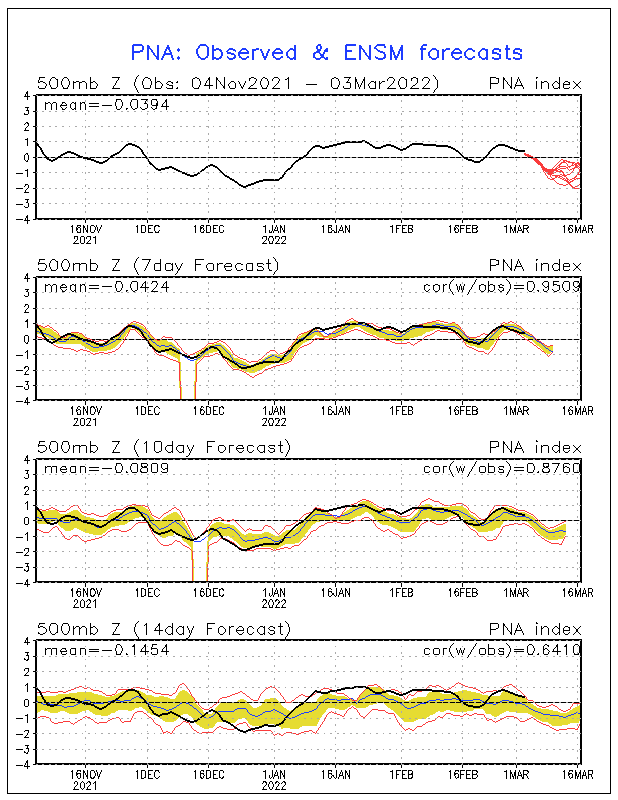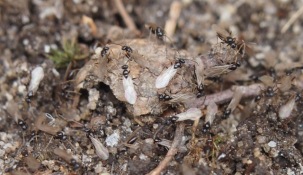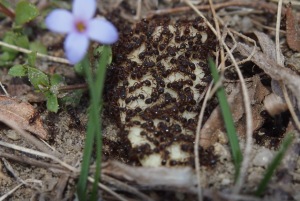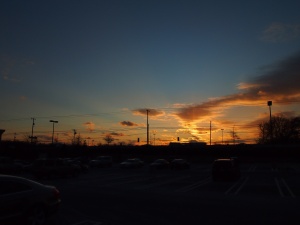A very interesting and tough to forecast snowstorm looks like it will affect the eastern part of the country this weekend.
The storm will originate in Texas and then move northeast towards the mid-Atlantic region. What it does there is a matter of debate. Odds are that this will not be a major east coast snowstorm, and here are the reasons why:
- Lack of phasing (this will keep the storm to the south, and weaker)
- Positive NAO/AO (this will allow the storm to move through quickly)
- West Coast trough (this will also allow the storm to move quickly)
- Positively tilted trough (this will keep the storm weaker)
- Time of Day (this may cause snow to melt on contact with the ground if it is now heavy)
A few days ago some of the computer models were showing the northern jet stream merging with the south jet stream. These two features now look like they will miss each other. The northern system will move faster than the southern storm. Without phasing, the southern storm will lack the energy to come north and will likely slide out to sea. This is the current scenario as depicted by model consensus.
 This map shows the possible locations of the storm through 72 hours. Each color represents a different time while each point represents a different model. These ‘clusters’ give us a good indication where the storm may go, but exactly where is still an unknown.
This map shows the possible locations of the storm through 72 hours. Each color represents a different time while each point represents a different model. These ‘clusters’ give us a good indication where the storm may go, but exactly where is still an unknown.
Take a look at hour 60, in pink, and you’ll see quite a spread north to south of possible storm positions. With storms like this, a shift in track of only 50 miles can have huge implications … ranging from just cloudy skies to inches of snow.
Why is this? The northern edge of the storm will be very tight. The distance from no snow to lots of it will be within 100 miles. The reason for this is an area of high pressure to the north and west. The high will pump cold, dry air into the northern part of the storm. While this is good for snow, the fact that it is dry is not. The dry air will erode part of the storm, causing the snow to stay further south.
 Take a look at this map. You’ll notice the storm on the east coast. But how can you interpret this map? Here’s how: green and blues are precipitation amounts in inches, the red and blue dashed lines are atmospheric thicknesses (literally how thick that layer of the atmosphere is) and the black solid lines are pressure.
Take a look at this map. You’ll notice the storm on the east coast. But how can you interpret this map? Here’s how: green and blues are precipitation amounts in inches, the red and blue dashed lines are atmospheric thicknesses (literally how thick that layer of the atmosphere is) and the black solid lines are pressure.
If you look at New Jersey, which is a pretty small state, you can see that the southern part of the state has a moderate amount of precipitation while the northern half is dry. The high pressure to the NW is preventing the storm from spreading that far north. Though, this is only ONE model, there are others and they have the storm even farther south, which shows no snow for any of NJ.
Also notice the trough along the west coast. This feature acts as a ‘kicker’ system which will move the storm along at a quick pace. Since the storm is moving so fast, the snow will have less time to fall, reducing amounts. Also, the fact that the NAO (North Atlantic Oscillation) is positive, this will allow for a much more progressive flow as well. A positive NAO allows storms to move quickly through the flow, since it does not favor ‘blocking’ over Greenland. Blocking means that storms are physically blocked from moving quickly or at all by another weather system.
Lastly, since most of the snow will be falling during the day, a lot of it may melt as it hits the ground. The sun angle is increasing with every passing day now, and since this is the last full week of February you will need moderate to heavy snowfall rates to get accumulations.
These factors lead to a less than impressive snow storm, by east coast standards, but is there a chance that it could be worse? Well, there’s a chance, a very small chance. The pattern this year, which has been dominated by La Nina, has led storms to come farther north than modeled. While this is still a possibility, the probability of this happening diminishes every passing day.
Once thing that may allow this storm to move a bit farther north is an area of low pressure near Newfoundland, Canada. This area of low pressure may amplify the weather pattern across the USA and cause our storm to jog a bit to the north. However, since our storm is working with a positively tilted trough, it will be weaker and faster, possibly negating any influence from the Newfoundland low.
With these factors all in consideration, here is my take on the storm. This is my first call:
 Again, this is just my first call. If anything changes I will update the map quickly. This is a highly uncertain situation, and lots of factors are on the playing field that can influence the outcome of this storm.
Again, this is just my first call. If anything changes I will update the map quickly. This is a highly uncertain situation, and lots of factors are on the playing field that can influence the outcome of this storm.


























